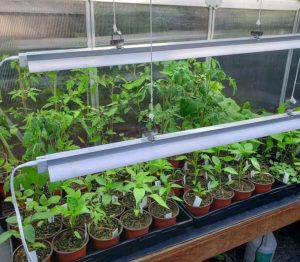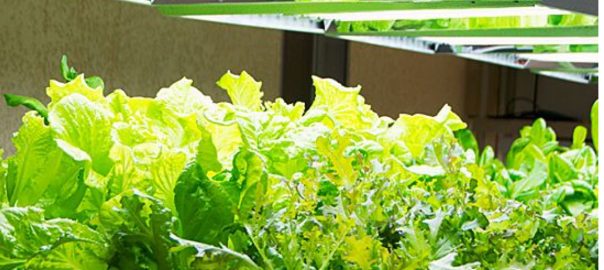Lighten Up!
How to use grow lights to boost plant health over winter.
Mid-winter is a time for celebration, and many of us use lights as part of the fun. But lights also have a more serious use for tunnel-house growers, especially in the shorter days of our coolest seasons. That’s because plants require light, as well as warmth, if they are to thrive. And no matter how warm it gets inside a tunnel-house in the ‘off-season,’ unless you master the skill of stopping the Earth turning, you cannot increase the natural daylight hours available to your plants! What you can do, however, is use grow lights. But before we get onto that, let’s take a closer look at just how demanding plants can be when it comes to light.

Plants can be demanding!
All plants require sunlight in order to photosynthesise and remain healthy. More importantly, they require an adequate number of light hours in order to achieve their full potential. Each plant has its own preference when it comes to the number of light hours it requires, and also the strength of that light. The peace lily, for example, prefers 12-14 hours of filtered (low level) light, but can flower when given just 2-4 hours of light. On the other hand, a tunnel-house tomato plant requires 8 hours of bright light through all its growth stages. Even the humble cabbage demands a healthy dose of light – around 6 hours to keep it happy, and 8-10 if it’s to thrive. You can read more about how many hours of light various vegetables require at Ponics Life.

Answering the call for help
If a tunnel-house grower is to provide their plants with the light they require year-round, then over the short-day seasons of late autumn to early spring, they will need to provide them with some artificial light (known in the gardening world as ‘grow-lights’). Lights which aid plant growth are usually referred to by ‘spectrum’ range. That’s because light waves come in different colours, and each colour can help a plant in different ways. For example, red light helps with fruiting and flowering. Blue light is important for the growth of leaves, stems, and roots. Green light is good at penetrating through leafy canopy, and white light is especially good for seedling development.
Height matters, too!
If grow-lights are to be most effective, they need to be placed at the correct height above your plants. The strength of a light is measured in watts, and the kind of LED (light-emitting diode) grow-lights that are used in a home tunnel-house are usually around 5-20 watts. This means they should be placed approximately 30cm above your vegg plants. As the strength of grow-lights differ, it can help to think about it like this: generally speaking, the younger your plants, the further away the light needs to be from them. And the stronger the lights are, the higher up they need to be.
Take me to them!
Grow-lights aren’t difficult to find. But when you do locate them, whether in a garden centre or on a site such as Trade Me, it’s easy to get bamboozled. Some lights are ‘full spectrum’ i.e. they have the full range of wavelengths to help each aspect of plant growth. Other lights are pink & blue (often called ‘purple lights’ because that’s the glow they give off when switched on.) Purple lights are helpful, too. Grow lights often come in rigid strips or panels, or they may be mounted on a soft strip on a reel. Both options offer different lengths or dimensions.
Safety first
Most tunnel-house growers won’t have an approved electric socket in their greenhouse, and to get one professionally wired in (which is what is legally required – a field cable isn’t a safe option), can be costly. But there are alternatives (which you should always discuss with your electrician before proceeding with). Alternatives include purchasing grow-lights with a USB attachment which can be plugged into a portable power bank similar to the one you may have as a backup for charging your mobile phone.
Timing is everything
However you decide to install grow-lights into your tunnel-house, be aware that they will need to switch on and off in order to provide the required number of hours of light your plants crave, and no more or no less. If you you don’t want to be traipsing back and forwards to the tunnel-house every few hours, you may want to invest in an automatic timing device that is compatible with your grow-light system.
Tips for working with grow-lights
Different plants require different amounts of light. When growing in the tunnel-house, group the same variety of plants together to help with logistics.
Even though it’s daylight in winter, much of the sun’s light may still be hidden behind cloud cover. On grey days, some growers leave their grow-lights on for a few hours to supplement the available natural light.
Choosing soft-tape grow lights which come on a reel means that you can roll them up over summer for easy storage.
Grow lights come in a wide range of prices. Purple style grow-lights on soft tape can often be purchased via Trade Me for just a few dollars.
